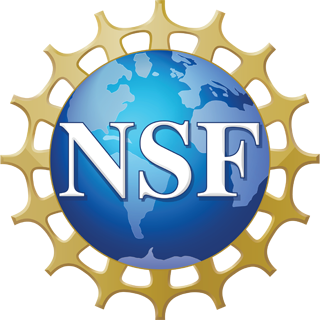| NSF Org: |
PHY Division Of Physics |
| Recipient: |
|
| Initial Amendment Date: | June 1, 2012 |
| Latest Amendment Date: | June 1, 2012 |
| Award Number: | 1160935 |
| Award Instrument: | Standard Grant |
| Program Manager: |
Steven J Gitomer
PHY Division Of Physics MPS Directorate for Mathematical and Physical Sciences |
| Start Date: | June 1, 2012 |
| End Date: | May 31, 2013 (Estimated) |
| Total Intended Award Amount: | $5,000.00 |
| Total Awarded Amount to Date: | $5,000.00 |
| Funds Obligated to Date: |
|
| History of Investigator: |
|
| Recipient Sponsored Research Office: |
700 S UNIVERSITY PARKS DR WACO TX US 76706-1003 (254)710-3817 |
| Sponsor Congressional District: |
|
| Primary Place of Performance: |
TX US 76798-7310 |
| Primary Place of
Performance Congressional District: |
|
| Unique Entity Identifier (UEI): |
|
| Parent UEI: |
|
| NSF Program(s): |
PLASMA PHYSICS, AERONOMY |
| Primary Program Source: |
|
| Program Reference Code(s): |
|
| Program Element Code(s): |
|
| Award Agency Code: | 4900 |
| Fund Agency Code: | 4900 |
| Assistance Listing Number(s): | 47.049 |
ABSTRACT
![]()
This award supports graduate student travel to the 13th Workshop on the Physics of Dusty Plasmas to be held at Baylor University, Waco, Texas, in May 2012. The objectives of this workshop are to review recent developments, to define outstanding issues and challenges, and to foster collaborations among the relevant disciplines. The interaction between dust and plasmas in laboratory, industrial, atmospheric, solar system, and astrophysical settings have yielded a new and rich phenomenology with potential applications.
PROJECT OUTCOMES REPORT
![]()
Disclaimer
This Project Outcomes Report for the General Public is displayed verbatim as submitted by the Principal Investigator (PI) for this award. Any opinions, findings, and conclusions or recommendations expressed in this Report are those of the PI and do not necessarily reflect the views of the National Science Foundation; NSF has not approved or endorsed its content.
The study of dusty plasmas is an interdisciplinary field with direct connections to astrophysics, nanoscience, fluid mechanics, and material science as defined through experimental, theoretical, and numerical studies. The field achieved an interdisciplinary research focus when the 1986 flyby of Halley’s Comet and Voyager’s images of Saturn’s rings focused the attention of plasma physicists on a field that had previously been considered as purely planetary science. Joint efforts between these disciplines quickly led to rapid advancement in both plasma physics (e.g., discovery of dust-acoustic waves, dust-ion-acoustic waves) and the planetary sciences (e.g., explanation of the spokes in Saturn’s rings, Jovian stream particles).
The primary objectives of the 13th Workshop on the Physics of Dusty Plasmas were to provide a review of recent advancements in the field of complex plasma, define new and existing outstanding issues and research challenges, and strengthen engagement between the field of complex plasma and other research related disciplines. Eighty-six paper and poster presentations were accepted covering topics including laboratory, theoretical, and computational studies of dust plasma interactions, with sixteen papers from the meeting published in a special issue of IEEE Transactions on Plasma Science.
Researchers from universities all over the world, including twenty-six graduate students evenly split between universities in the United States and international universities, participated in the workshop. This NSF grant provided funds for eight US students’ travel and lodging. The students gained valuable experience from the conference, making either a poster or paper presentation, and discussing their research with other experts in their field. The students also learned about the cutting-edge research being performed in other labs and new analysis techniques that have been recently developed. Ultimately, the professional connections made at this conference will having a lasting benefit for these students as they make future plans for graduate studies, post-doctoral positions, and employment opportunities.
Last Modified: 06/10/2013
Modified by: Truell W Hyde
Please report errors in award information by writing to: awardsearch@nsf.gov.




